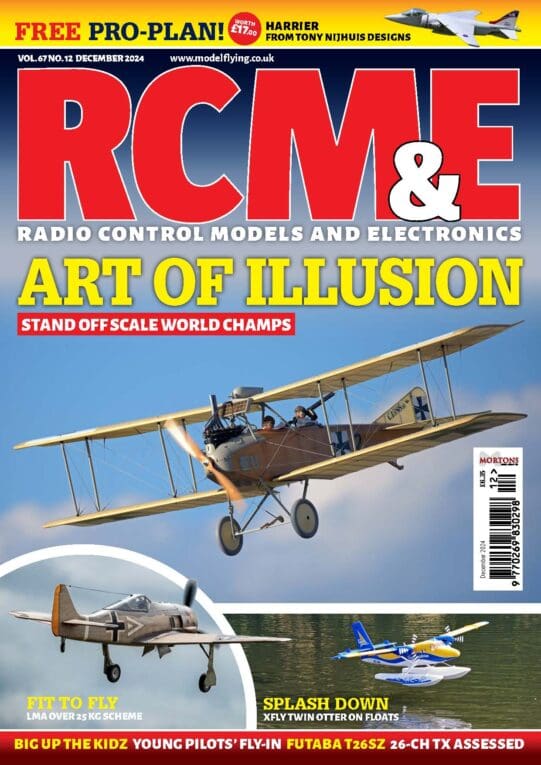No-one can deny that this little package would grab anyone’s attention on the shelves of a local model shop, not least because the box clearly states that everything’s included, right down to the flight batteries. A four-channel model with 35MHz radio and a 1300mAh Li-Po battery, my example of this Pitts features a brushless motor, although I believe there’s also a brushed version available complete with gearbox and NiMH cells. So, there’s nothing else to buy and, indeed, having paid your £149 and bundled the box into the back of the car, all you need do is stop at the petrol station on the way home and get yourself a pack of AA cells for the Tx. But that’s not all you know, far from it. Lift the lid when you get home and you’ll notice that Art-Tech have very kindly packed a spare propeller, a PC-based simulator program (on CD) and an interface lead to connect the supplied Tx to your computer. Good, eh?
GOOD GAME, GOOD GAME!
Having spent five minutes glancing through the 15-page instruction booklet to get the measure of the build, I decided to have a little fun and time the duration of the assembly. Stopwatch at the ready and in a scene that resembled one of the Generation Game’s finest moments, I set to work. A quick prècis is all that’s needed here: slot the undercarriage wire into the fuselage, plug the aileron lead into the Rx, screw on the bottom wing, followed by the top, and that’s it! Thirteen minutes flat. “Didn’t he do well?” Er, not exactly. You see, at the fourteenth minute, when I went to slot the flight pack into its little housing, I realised that in my haste I’d forgotten to route the ESC battery connector, and that the whole thing would have to come apart again. Doh! Moreover, the aforementioned battery housing wasn’t large enough for the Li-Po pack.
Although there are two hatches on the underside of the fuselage, the Li-Po wouldn’t fit in either (I think the rear hatch is for the NiCad version), and although I tried to carefully remove the front hatch door assembly – I figured I could use Velcro to hold the pack in place – there was no budging it without doing some serious surgery. This was a shame, as the battery itself was the exact size of the hole, but the combination of leads and cells made it just too wide. With a hole cut into the rear hatch I found I could force the pack in, leads first, leaving just enough to connect to the speed controller and keep everything hidden under the hatch door. Just under half an hour had passed, and I was ready to hit the flying field!
Enjoy more RCM&E Magazine reading every month.
Click here to subscribe & save.
I took a close look at the supplied charger for the flight battery and was a bit concerned as there were no LEDs to indicate a fully charged pack. This is a little odd as the instructions depict a wall charger with an LED! The same instructions suggest that you leave the NiCad pack plugged in for three to four hours and state that, …the battery will be a little warm after charging. However, for the Li-Po the advice is very vague and somewhat misleading to people who aren’t familiar with the technology. In contrast, there’s a full page devoted to Li-Po safety but nothing that indicates charge times. Anyway, I used the wall charger, but only for the sake of completing a accurate review. Needless to say, I haven’t used it since. For what its worth, all subsequent charges have been carried out using my dedicated Li-Po field charger.
A quick plonk on the scales revealed an all-up weight of 20.8oz (590g); that’s 17.4oz for the model and 3.4oz for the Li-Po. The instructions stated 21oz (600g) so I was happy at that. With eight ‘AA’ cells borrowed from an old R/C car Tx, we were ready to rock! Be sure to check out Part Two (link below) to see how she fared in the air.




